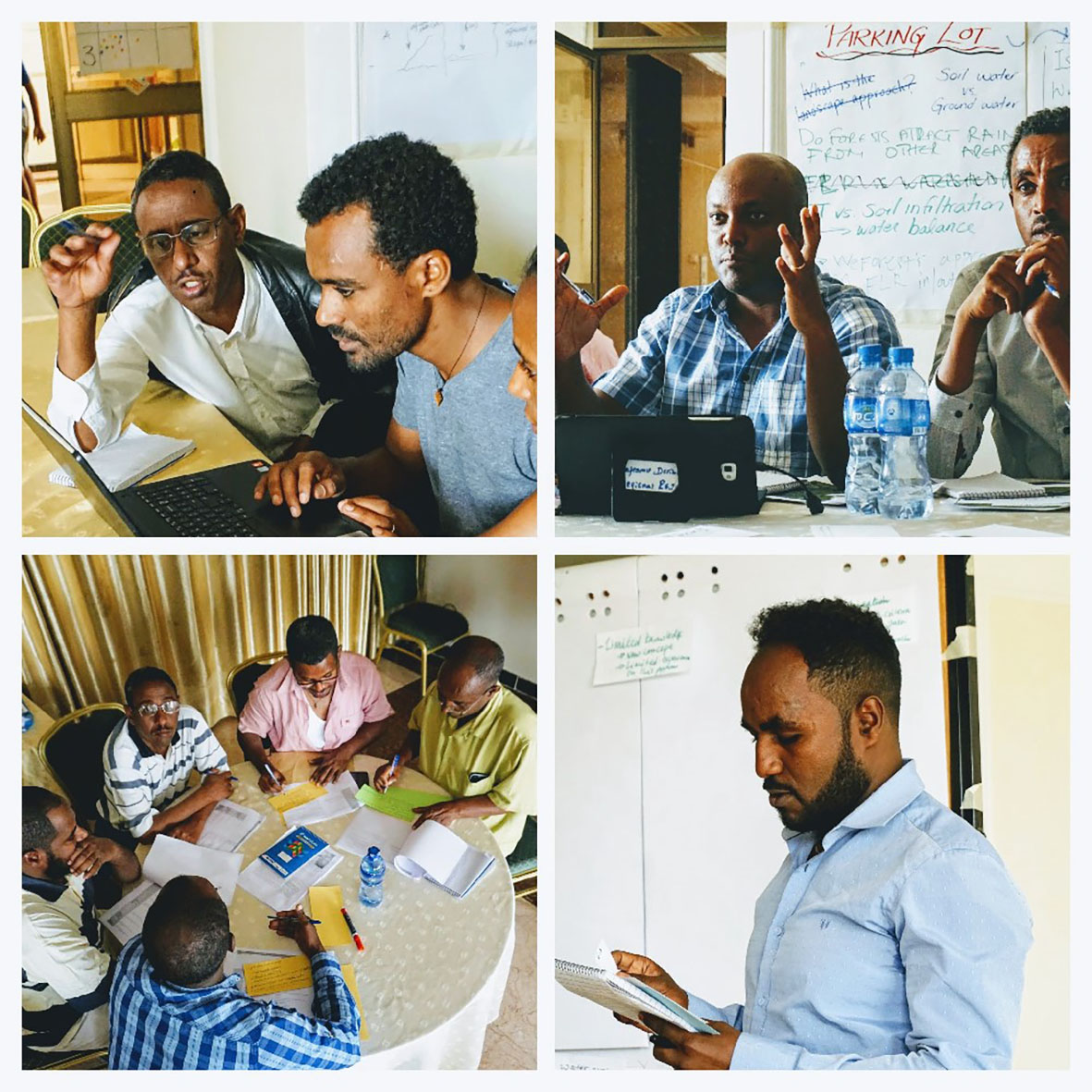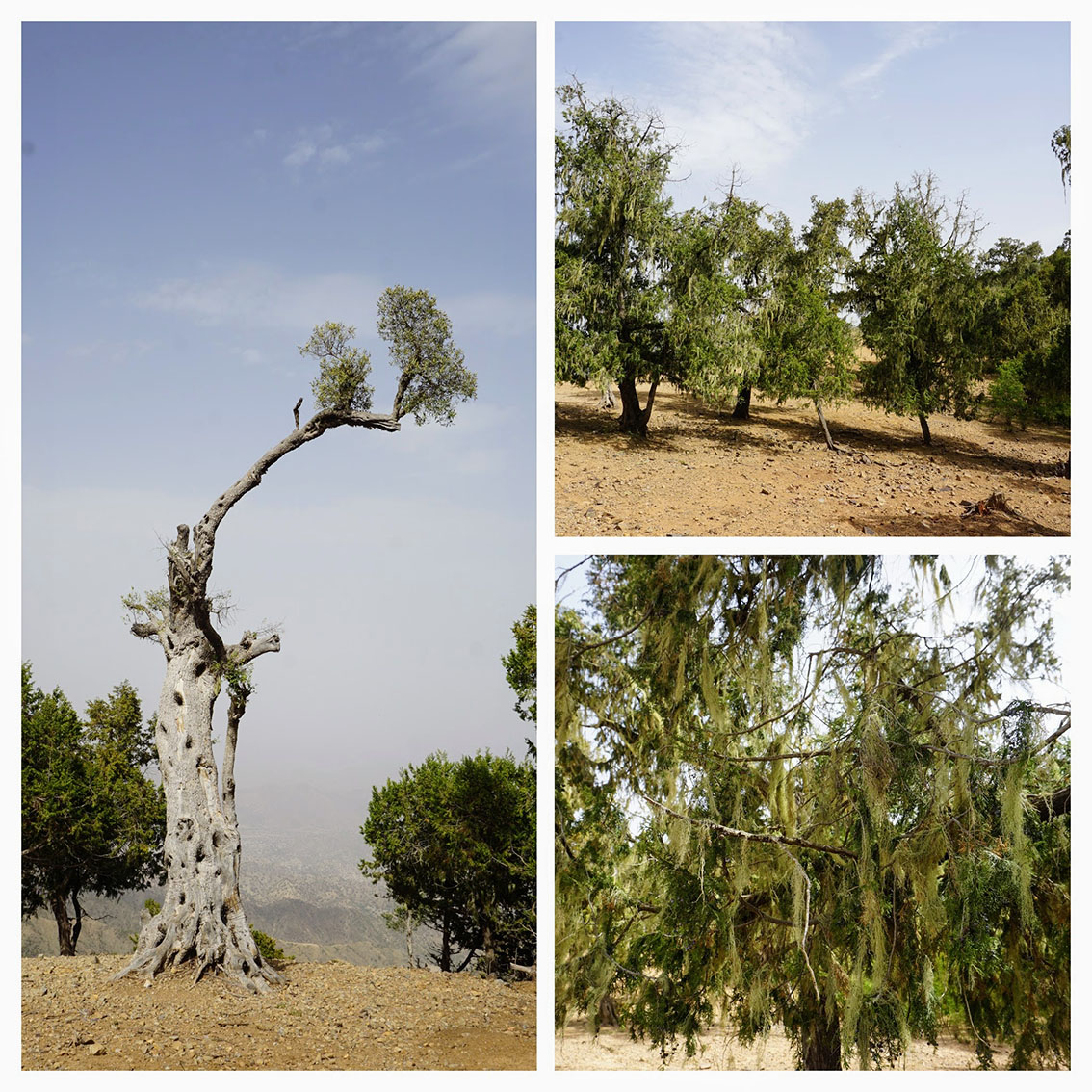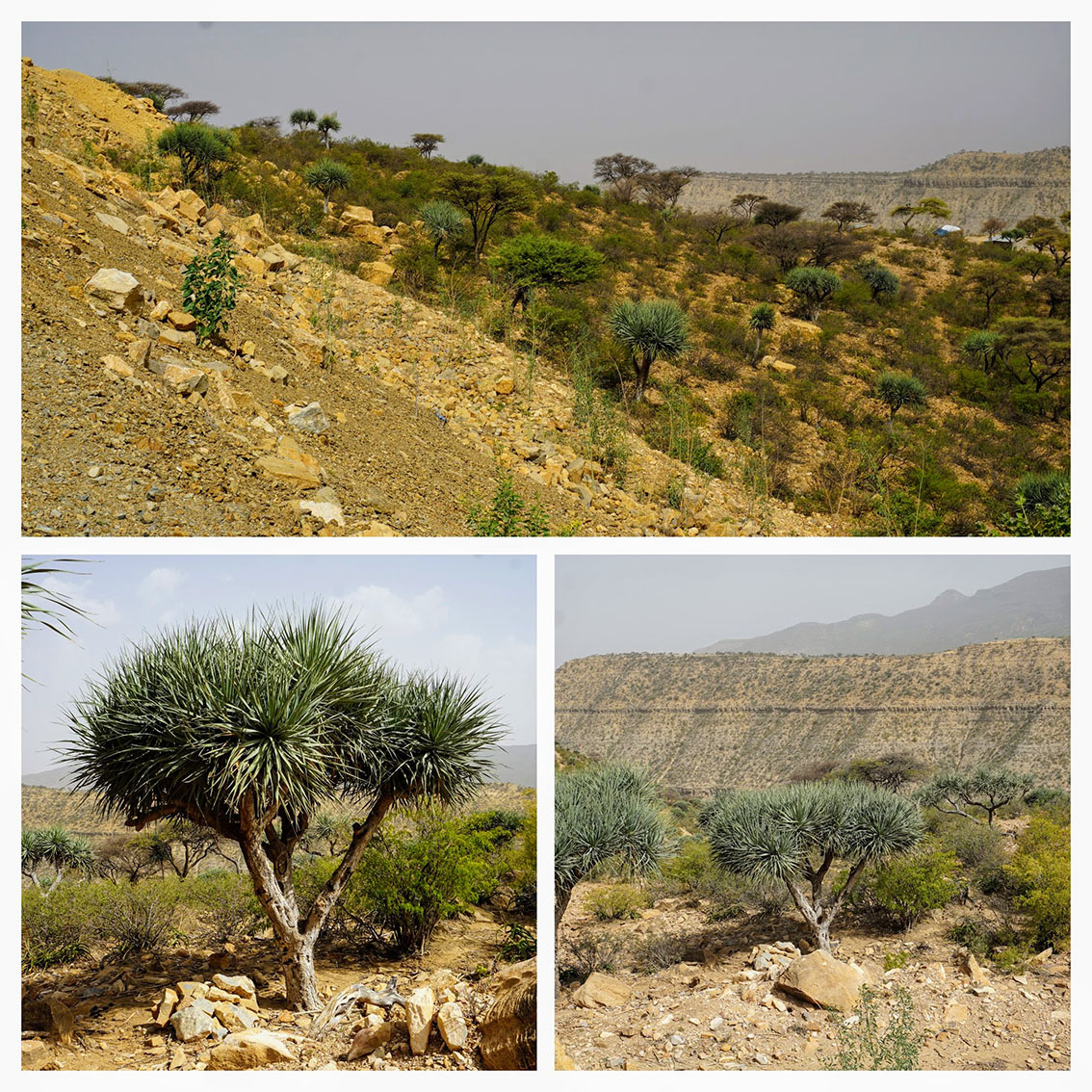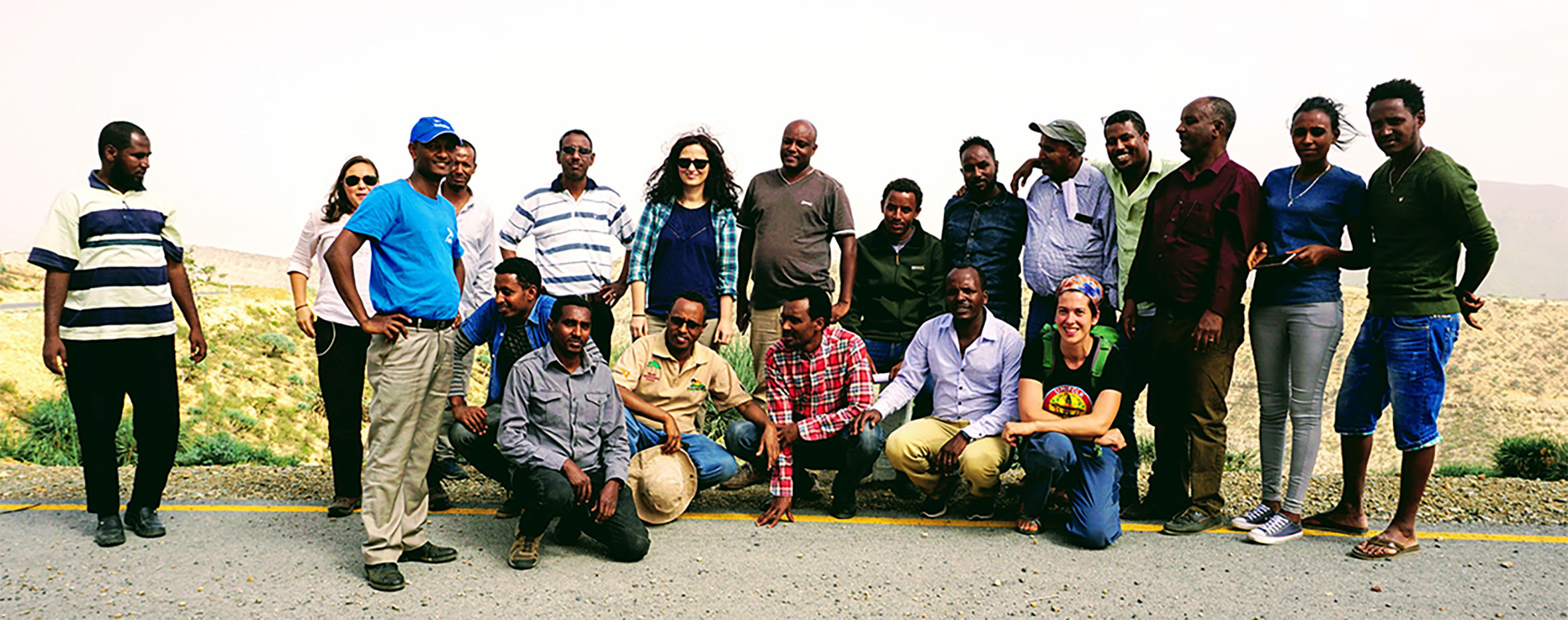Last month, WeForest, FAO’s Forest and Water Programme, and GIZ delivered a
capacity-building workshop on forest and
water in Mekelle, Ethiopia. ICRAF’s GeoScience Lab was involved in the
organisation and delivery of the workshop through Aida Bargues Tobella, who was
one of the facilitators.
The workshop, entitled ‘Building forest-water knowledge and capacity for Forest and Landscape Restoration’, was held from 18th-24th June and aimed at strengthening and building the local knowledge and capacity in measuring and monitoring forest-water relationships in the context of Forest and Landscape Restoration (FLR).
The workshop trained a total of 16 participants from various organizations following a participatory, train the trainer approach. Among the participating organizations there were local and international NGOs and research institutes such as the Ethiopian Environment and Forest Research Institute (EFRI), World Vision, Naturschutzbund Deutschland (NABU), Deutsche Gesellschaft für Internationale Zusammenarbeit (GIZ) and Mekelle University. With the tools provided during the workshop, the participants will now be able to train other members within their own organisations on forest and water monitoring.

Participants in action during group work, discussions and presentations. Photos by Aida Bargues Tobella
The participants gained knowledge and skills through a set of various learning activities including group work, exchange of experience and discussions, and field-based exercises. During the field visit, the participants learned how to measure soil infiltration capacity, which is a key variable controlling soil and groundwater recharge, surface runoff generation and flooding.

Participants in action during the field visit. Photos by Aida Bargues Tobella and Victoria Gutierrez
Another important output of the workshop was a draft forest-water monitoring plan for WeForest’s Desa’a FLR project. Desa’a Forest, a national forest priority area of 154,000 hectares, is the last ecosystem of its kind in Northern Ethiopia, consisting of dry afromontane secondary forest dominated by Juniperus procera and Olea europaea. This area lies between the Tigrarian plateau and the Afar lowlands, ranging between 3100 and 900 meters above sea level. During the last 30 years, about 40 percent of the closed forest cover within the Desa’a Forest has been lost, and many other areas are heavily degraded. Over half a million people in Tigray and Afar regions depend on this ecosystem for their livelihoods, food and water security. After two and a half years of pre-implementation work, WeForest will begin to conserve and restore core forest areas in Desa'a, working hand-in-hand with local communities. A multi-strategy approach that integrates forest-water interactions is a vital aspect of WeForest's FLR approach.

Desa'a forest is dominated by Juniperus procera and Olea europaea. Photos by Aida Bargues Tobella

Dragon tree (Dracaena ombet) is a common species in the Afar lowlands, Photos by Aida Bargues Tobella
Water scarcity poses serious constrains to primary productivity and livelihood opportunities in drylands. At the same time, FLR is being extensively promoted and adopted as a tool to restore ecosystem functionality and enhance the provision of ecosystem services. Globally, Africa has been identified as the continent having the greatest land area with forest and landscape restoration opportunities. Some examples of large-scale FLR initiatives in African drylands include AFR100 (African Forest Landscape Restoration Initiative) and the Great Green Wall for the Sahara and the Sahel Initiative. It is therefore extremely important to monitor the impacts of on-going FLR restoration activities on water resources in African drylands. Likewise, there is a need for forest and water considerations to be integrated into forest and landscape management practices as well. In a step towards achieving this, workshop participants formed the Ethiopia ForWater Interest Group, which will focus on strengthening this new network of forest-water stakeholders to facilitate and scale-up forests and water interventions in FLR and Integrated Watershed Management (IWM).

The workshop participants
You can click here to read WeForest and FAO's related posts

Comments
No comments yet.